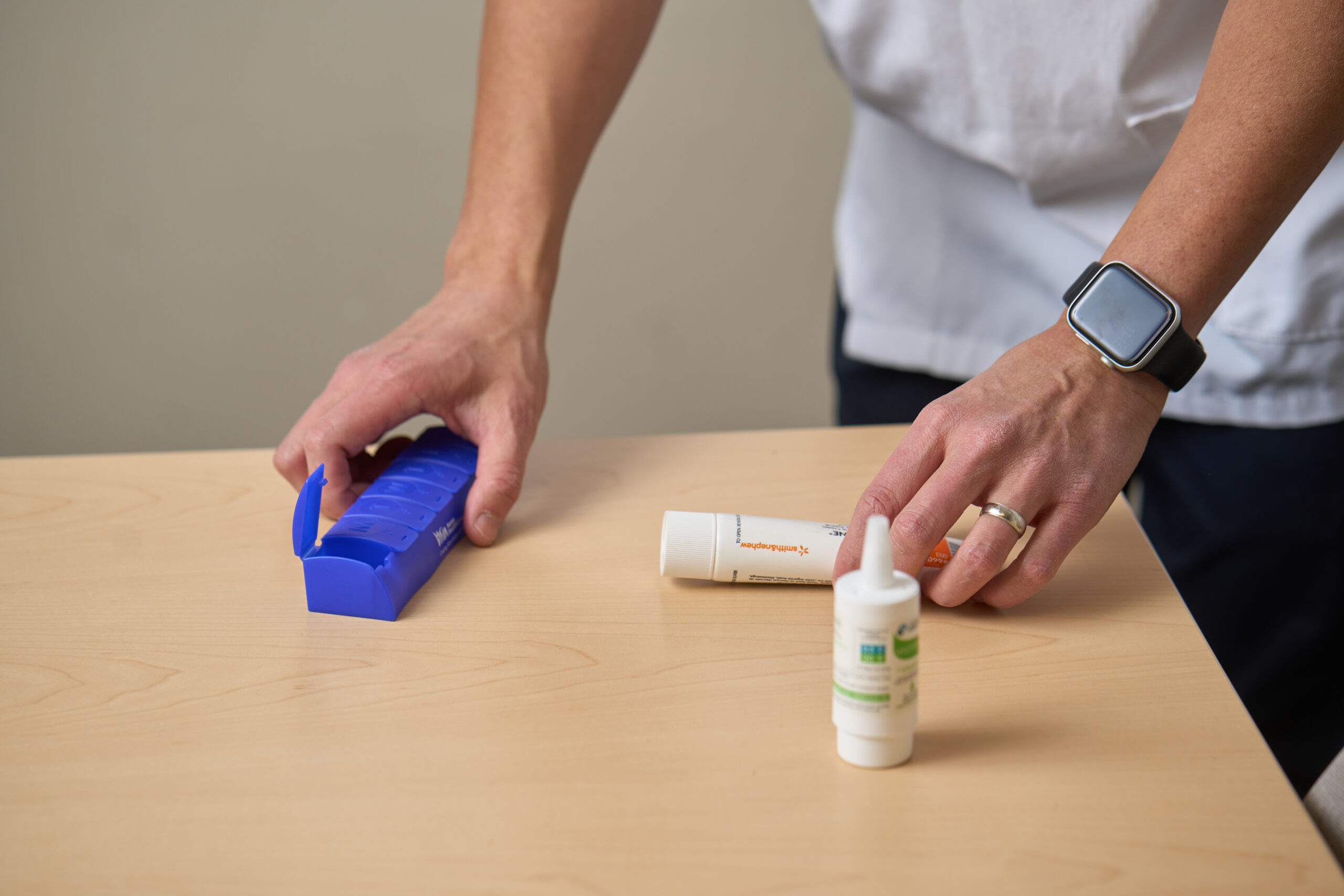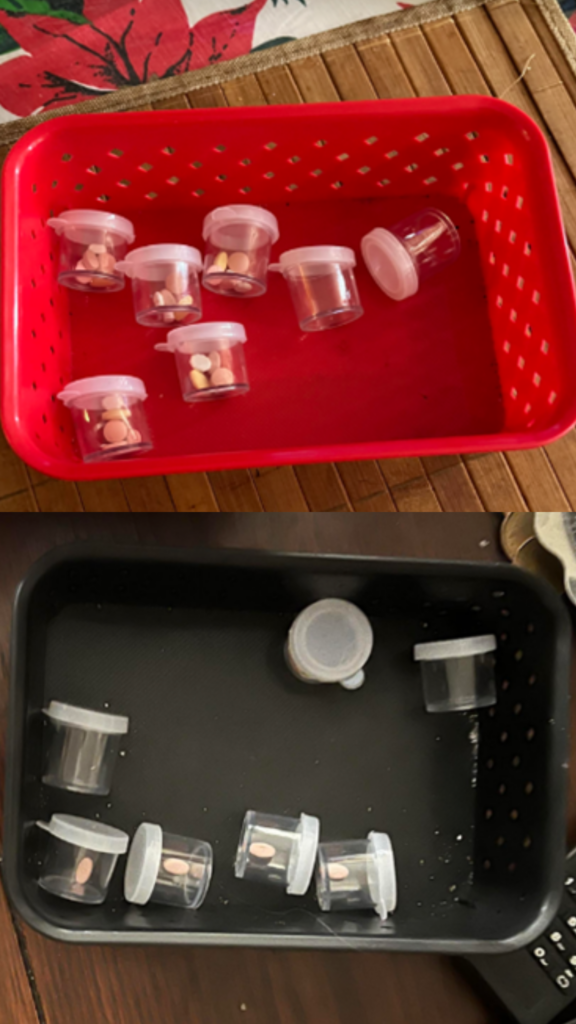VHA In-House Pharmacy Program: Another key to Interprofessional Collaboration and Client Safety

It has been just over one year since VHA Home Healthcare (VHA) began offering In-House Pharmacy services, and since the program began, VHA’s team of pharmacists have been incredibly successful in achieving their goal of enhancing medication safety in the home, helping clients to remain healthy and safe in the setting where they are most comfortable.

Pharmacists Tom Wang and Norman Umali
“Many frontline staff at VHA who visit people in their homes will come across complex medication scenarios at some point. We know that many seniors take an average of 8 different medications, so our clients often have a lot of questions about their medicine and potential side effects,” explains Norman Umali, VHA pharmacist.
In fact, 52% of clients assessed by VHA’s pharmacy team in 2023 had 10 or more medications in their home, and 30% had unused medications disposed of by their pharmacist.
Many questions around medication would typically get directed to a community pharmacist, working in a drug store for example. But because VHA’s pharmacy team is embedded at VHA, they can assess clients in their home environment to better understand their unique situation and concerns. The role at VHA also means pharmacists can easily communicate with the client’s VHA care team and access their shared medical record. All of these elements contribute to a thorough and comprehensive medication consultation process.
During the consultation, pharmacists may discuss:
- Medication counselling and review
- Tips on medication management and regular follow-up
- Knowledge about multiple medications and how they may react with each other
- Unused medication disposal
Early Success: Case scenarios from VHA pharmacist Tom Wang
Collaboration with visually impaired client leads to new solution at home

Pharmacist Tom Wang’s medication management solution for a visually impaired client to assist her with her medication regime.
Recently Tom worked with a client through the MGH2Home program. This client’s home care nurse contacted the pharmacy team for support. The client is visually impaired and expressed she was having difficulty taking her medications on her own. This client has already a few solutions, like blister packs and pill boxes, yet the client continuously ran into issues identifying which medication to take and when.
By working with the client and a family member, Tom came up with a solution. He separated the daily medications into 2 baskets – one to take in the morning and one to take in the evening. The evening medications were placed in the basket beside the client’s bed, and the day-time medications were placed in the client’s living room. In each basket, her medication for each day of the week was already stored in 7 individual containers. That way, the client could easily reach for the correct dosage at the right time of day and have peace of mind that she was taking her prescriptions safely and correctly on her own, granting her more independence. This simple solution is not only easy for her caregiver to sustain long-term, it also reduces the need for medication-related appointments with her nurses and personal support workers.
Interprofessional collaboration with pharmacist brings care team together to address client safety
After a client was discharged from hospital, they were receiving home care from VHA. Several Personal Support Workers (PSWs) on the team noticed and reported the client’s worsening agitation. Tom stepped in to identify potential issues with the client’s medication regime. The pharmacist connected with the client’s home care nurses, family doctor, geriatrician and community pharmacist to get a comprehensive understanding of their routine and made recommendations to reduce the client’s agitation symptoms. Under the pharmacist’s advisal, the team jointly made the decision to change the client’s medication. Since this adjustment, the client’s mood has improved significantly.
These examples highlight just a few of the many ways pharmacists can work as part of an interprofessional team, aligning different aspects of the circle of care. VHA pharmacists can work with clients to improve their quality of life, helping them to remain safe at home and out of hospital.

